The geographic region of North America known as Cascadia encompasses some (or all) of 8 US states (Northern California and Nevada, Northwestern Wyoming, Oregon, Idaho, Montana, Washington, and Alaska) as well as the Canadian province British Columbia and Yukon territory. Stretching for more than 2,500 miles and encompassing nearly 1.4 million square miles, it contains over 75 distinct ecoregions with an astonishing number of plants, animals, and habitats. It’s also stunningly beautiful.
What a perfect setting for a game.
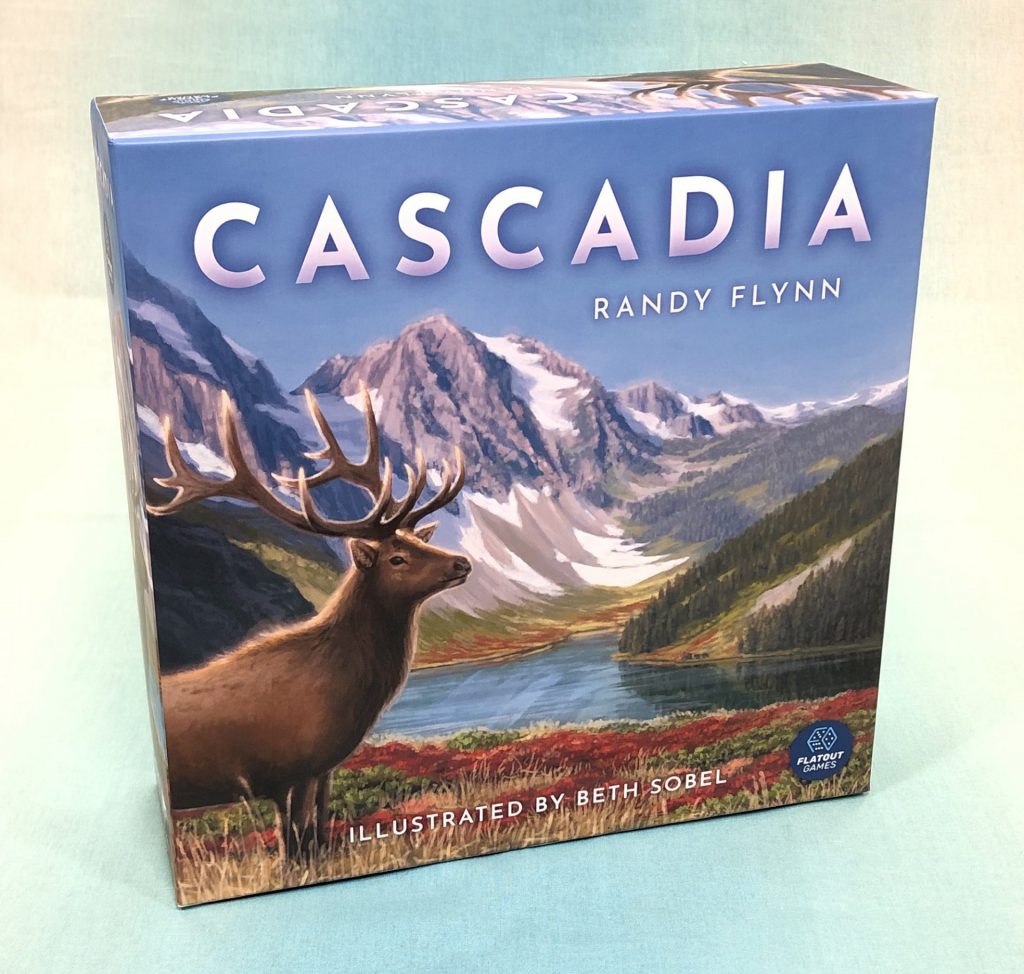
Cascadia Overview
In Cascadia, from Flatout Games and designer Randy Flynn, 1-4 players will build their own biodiverse cardboard countryside by placing habitat tiles (forest, wetland, river, mountain, and prairie) and wildlife tokens (foxes, elks, salmon, bears, and hawks). Players will earn points at the end of the game for the largest group of each habitat type, as well as for placing wildlife into specific patterns as indicated on cards selected during setup. Cascadia is easy to learn and play, so let’s quickly walk through the setup and a turn.

Setting up Cascadia
To set up a game of Cascadia players will shuffle and stack all of the habitat tiles then place them to the side. Mix up the starter habitat tiles and give one to each player.

Place all of the wildlife tokens into the bag and mix well. Then deal out 4 face up habitat tiles and pair each of them with a face up wildlife token. Set the nature tokens to the side (more on that later). Finally, select the A, B, or C wildlife cards and place them to the side where all players can see them. When you’re done, your setup should look something like this.

A Turn in Cascadia
Over the course of a game of Cascadia, players will build up their own ecosystem by placing habitat tiles and wildlife tokens. On your turn you’ll select one of the habitat tile and animal token pairs and place them in your environment.
The only rules for habitat tile placement is that your new tile may not be placed on top of another habitat tile and must be placed against the face of an existing tile. Matching the geography of the placed tile isn’t a rule, but while geography doesn’t matter for placement it will have an impact on your scoring, as well as where you’re able to place your wildlife tokens.
After your habitat tile has been placed, you’ll move on to placing your wildlife tokens. Placement rules for animals also have only two rules: a wildlife token can only be placed on top of a matching animal icon of an existing habitat tile and only one wildlife token can be placed on each habitat tile. Since you’ll get a large portion of your points from scoring animal cards, you’ll want to pay close attention to where the animals wind up.
In the rare case you can’t place a wildlife token that you selected, it’s returned back to the bag.
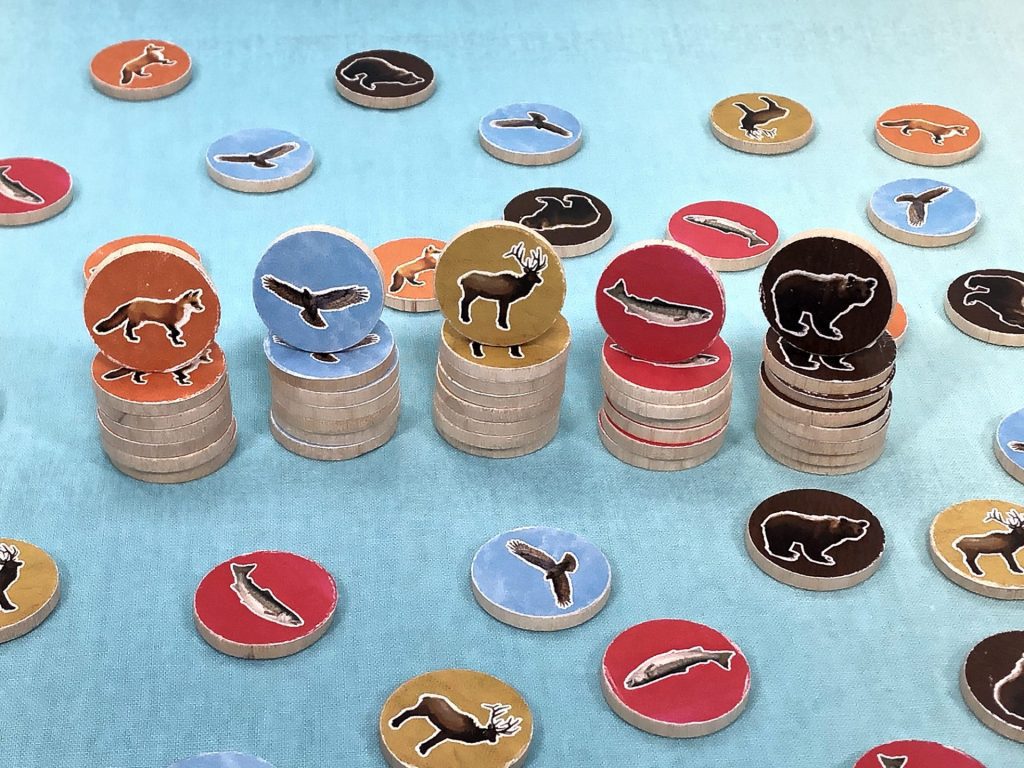
Almost all of the habitat tiles in Cascada feature a mix of geography, but there are a handful of special habitat tiles called keystone tiles which showcase only a single type of habitat. When placing an animal onto this tile, players will earn a nature token which can be spent to split up the paired habitat tile and wildlife tokens during the selection process.

Scoring Points in Cascadia
There are 4 ways to score points in Cascadia:
- 1 point for each remaining nature token
- 1 point per tile in your largest group for each habitat type
- 0-3 points for having the largest group of habitat type (point values vary by player count)
- Wildlife scoring cards (see below)
Habitat and nature token scoring is easy to understand, but let’s have a look at some examples for the A wildlife cards.
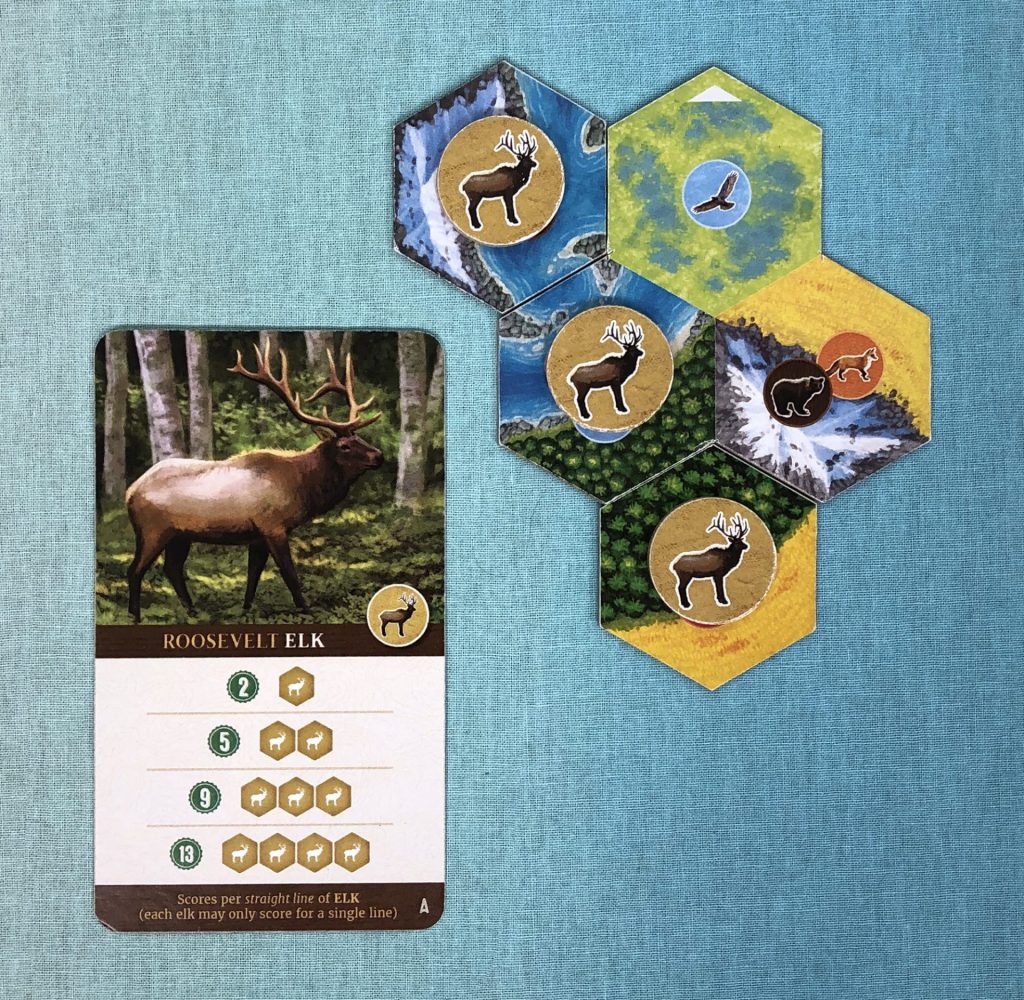
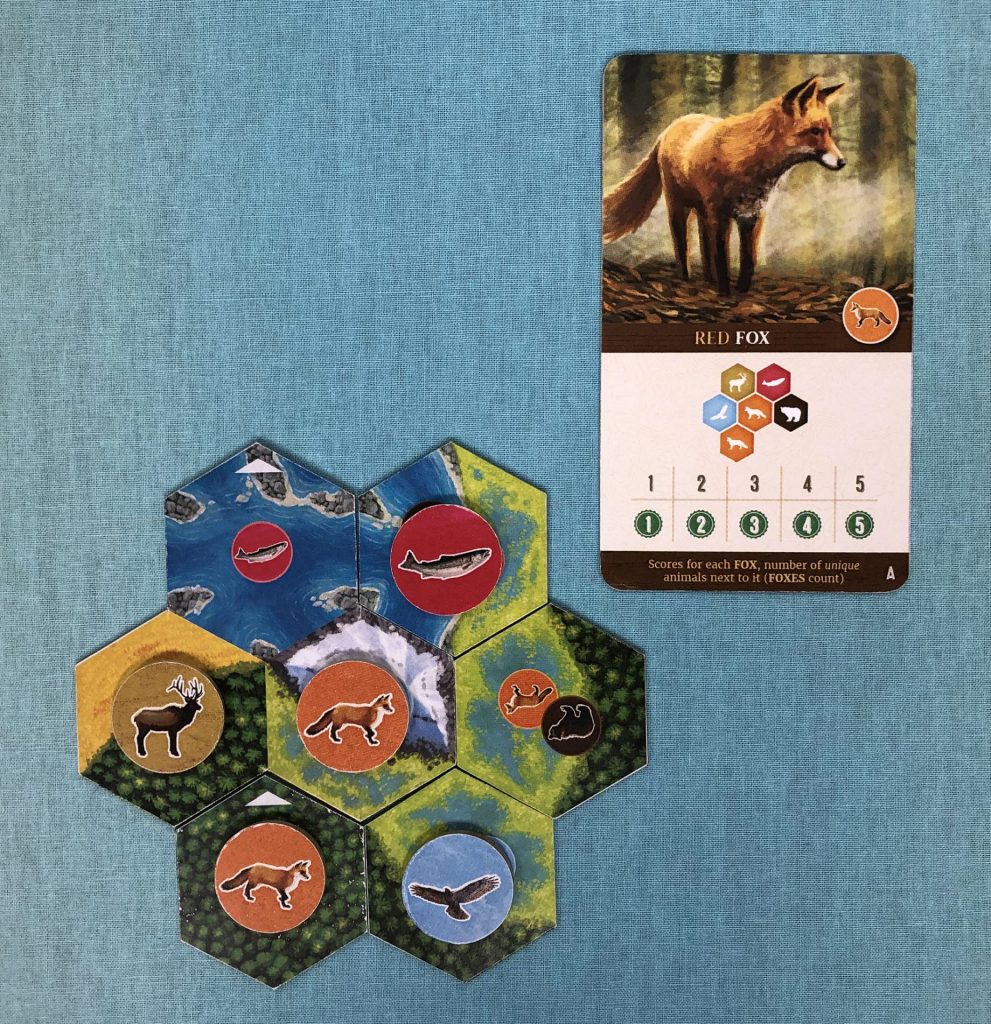



Finishing a Game of Cascadia
Once the stacks of habitat tiles are gone the game ends immediately and players move on to the scoring phase. Flatout Games have provided a convenient and attractive scoring sheet which makes collecting the point totals a snap.
Your completed environment might look something like this.

If you counted 65 points you’re right on the nose. Only time will tell if that’s enough to win you the game!
Final Thoughts on Cascadia
Here at Meeple Mountain we have a concept that we call Builder’s Satisfaction. It’s the feeling you get after playing a game that results in something tangible and appealing. Be it an ancient Greek city in Santorini or an abstract dice sculpture in Blueprints, these are games which leave you happy that you just made something that looks cool.
Cascadia is like that for me. The tiles and wildlife tokens are so beautifully and lovingly illustrated, and fit together so perfectly that they form a wonderful tableau expanding out in front of you. During my games I found myself selecting tiles which would complement my landscape in addition to just earning me points. In fact I intentionally arranged my environment in such a way that mountains led to rivers which led into wetlands and prairies…because that’s how nature works, right? Even though I never won a game, I was always proud of the environment that I crafted!
And it’s easy to be proud of your results in this game…the artwork from Beth Sobel is so wonderful that it’s genuinely hard to tell that the grizzly on the scoring card isn’t real; the way the light glints off the fur on its back and head is simply marvelous. And the rest of the artwork is similarly inspired. I have yet to find a piece of art from Beth I didn’t love.
But don’t think that the game is all show, Cascadia has enough strategy for everyone. From your very first turn you must choose not only the right habitat tile to allow you to map out your strategy, but you also have to hope you get the right animal tokens to go along with it. Similar to Calico, Public Market, and Dollars to Donuts (also from the Flatout Games team), players must constantly balance the parallel needs of habitat tile and wildlife token, but also be willing to quickly shift their strategy if the right draws don’t come up. In my first game, my 7 year old son kept hogging all of the salmon tokens, leaving me with none, and wound up with 6 of them…a cool 20 points. He went on to beat me…which is another feather in Cascadia’s cap; a 7 year old was able to pick up the game and win on his first try, while also keeping me engaged in the game.
Since the tiles and tokens are drawn and assigned randomly you’re never quite sure of the pairings that present themselves. But that’s where the nature tokens come in, giving players a way to split up the tiles and tokens and select exactly the right set for your needs. But you still have to get a keystone tile and be able to place the right animal on it. But honestly that’s a minor issue for me. I don’t mind a bit of luck now and then, it keeps things fresh.
Cascadia is a perfect blend of compelling gameplay and engaging theme from designer Randy Flynn and gorgeous artwork from artist Beth Sobel. It’s safe to say that Flatout Games knocks it out of the park once again. If you’re looking for a high quality family weight game then Cascadia should be on your list…and on your shelf. It’s currently live on Kickstarter, don’t pass this one up!




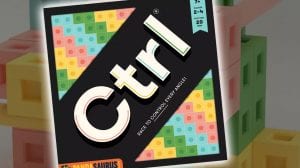

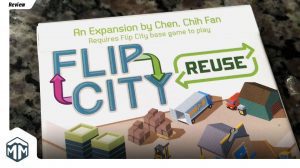





Add Comment